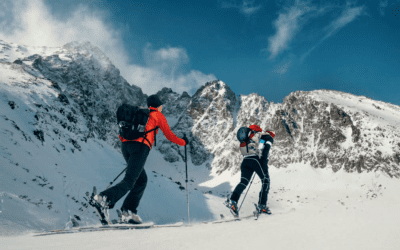Our feet can have numerous deformities, some of them that can be had at the same time as well. Deformities like hallux rigidus, hallux valgus, claw, or hammer toes are common and potentially painful. Those can also make it difficult for us to put on shoes and such. There are, of course, less common foot diseases that can also be treated surgically. Foot surgeries have improved greatly over the years. What used to be big, severe surgeries with numerous complications are now comfortable, reliable, aesthetic surgeries with fewer risks. Most of these surgeries can be performed with minimal to no incisions. They are percutaneous and minimally invasive surgeries that often leave no scars whatsoever.
To learn more, keep reading the article by Dr. El Yazid Mouhsine.
Forefoot deformities
Forefoot deformities (hallux valgus (deformity of the big toe), claw toes or hammer toes, quintus varus (deformity of the little toe), hallux rigidus (arthritis…) are common, especially in women. These deformities can be bothersome because they cause pain, make it difficult to put on and take off shoes and are unaesthetic, which can have an impact on the psyche, for fear of “showing your feet”. Sometimes there is a combination of two or three of these symptoms.
Other foot diseases are less common (for example, a heel spur, inflammation of the aponeurosis plantaris (tendon plate in the area of the sole of the foot), arthrosis in the mediotarsal joint or in the hind foot, osteochondral lesions or lesions of the ankle ligaments, Achilles tendon rupture …) and can be treated surgically. Foot surgery has developed greatly in recent years. It has changed from severe surgical interventions, which are accompanied by severe pain and a long functional limitation, to a more comfortable, functional and aesthetic surgery. Today, forefoot deformities (hallux valgus (malposition of the big toe), claw toes or hammer toes, quintus varus (malposition of the little toe), hallux rigidus (arthrosis) …) can be corrected percutaneously (without incision and thus without scar) or minimally invasively (small incision of a few millimetres, called MIS: minimally invasive surgery). The results of these interventions correspond in the medium and long term to those achieved with open surgery, which is still practised. The advantage of this gentle surgery, which is used worldwide and is becoming more and more widespread, is that the structures are affected as little as possible and internal implants are used only minimally. Therefore, the consequences of the surgery are less severe, allowing a quicker return to everyday life (depending on the severity of the deformities and whether one or two feet are affected, as well as age and health status). These conditions can of course also be treated non-surgically. Such treatment is discussed with the doctor before a surgical intervention is decided. For foot deformities, footbed inserts, corrective orthotics, physiotherapy, reflexology, etc. can be prescribed. The advantages and disadvantages of each treatment option are explained and the decision is up to the patient – sometimes with the support of the attending physician.
Surgical treatment
Hallux valgus (HV) and quintus varus (QV)
The procedure includes dissection of the phalanx ligament of the abductor of the great toe, ablation of the ecostosis and realignment osteotomy (fracture) of the first tarsal bone (HV) or the fifth tarsal bone (QV). Most often the correction can be perfected by realigning the big toe through an osteotomy of the first phalanx. This targeted fracture is fixed with a 2 mm stainless steel staple visible above the skin, which is removed no later than 4 weeks after the operation. In rare cases, this staple is also required for the little toe; for the big toe, it is used as standard.
Clawed toes
The correction is done by blocking 1 or 2 joints of the 2nd, 3rd, 4th or 5th toe. This blockage is fixed either with a clamp visible above the skin, which is removed after 4 weeks, or with an internal implant. Depending on the severity and type of deformity, a section of the tendons of the flexor or extensor muscles may also be performed.
Metatarsalgias
Dislocation or subluxation of the MTP joints, osteoarthritis or simply an imbalance of the metatarsal bones (for example in the Greek foot) can cause pain. These can be treated with fixed or non-fixed, open or percutaneous shortening osteotomies.
Hallux rigidus (HR)
This condition is mainly treated with arthrodesis (definitive blocking of the joint) or by arthroplasty (replacement of the joint with a prosthesis). However, depending on the condition of the joint and the needs of the patient, a simple resection of the bone growths (osteophytes) can also be performed percutaneously, without a definitive or temporary implant. This can reduce or eliminate pain and improve the mobility of the joint, but most importantly it makes it easier to put on and take off shoes. In rare cases, this is not enough and an arthrodesis or arthroplasty must be performed in a second step.
Anaesthesia
The operation can be performed under general, spinal or regional anaesthesia. The decision depends on the state of health, which may exclude one or the other form of anaesthesia, or on the patient’s wishes. Regional anaesthesia allows freedom from pain in the hours following the operation, but may slow down rehabilitation.
Consequences of the operation The consequences vary, of course, depending on the type, severity of the corrected deformities and their unique shape. In most cases, however, the patient can put full weight on the foot again immediately afterwards with a special shoe. Walking sticks are not required. The special shoe is no longer needed after 4 weeks. Walking with bare feet is allowed at home. As the patient can walk again directly after the operation, he can resume his everyday activities immediately, even travelling is possible. However, the rhythm must be adapted to the operation. The patient must plan recovery times when the foot can be elevated. A special sock or plastic bag must be used when showering. Generally, after operations with these procedures, the patient can go home on the same day as the operation or, depending on the type of operation and the concomitant diseases of the person operated on, in the five days following the operation.
When sitting, the foot should be elevated to avoid swelling. Driving is allowed as long as the pain allows it. Driving a car does not generally affect the results of the procedure and the latter does not affect the ability to drive. If the patient has a sedentary job (for example, in the office), work can be resumed quickly after one to two weeks. People who work standing up, engage in a physical activity or have to walk for a long time can expect to be unable to work for up to six weeks or longer. Again, resumption of work depends on the patient’s capacities and the severity of the corrections made. Dressings are changed once a week by our assistant. Follow-up examinations are carried out once a week for 3-5 weeks, depending on the procedure, and then after 3 months, after 6 months and after one year. In order to distribute the body weight optimally over the feet, custom-made foot bed insoles are prescribed to prevent overuse injuries and progressive lowering of the arch of the foot. Customized insoles can also be prescribed.
Possible complications
Complications are very rare, but the patient must be informed about them in order to recognise them and treat them as quickly as possible. In rare cases, infections occur. They are treated with antibiotics and, if necessary, the implanted material is removed. Thromboses and pulmonary embolisms are also very rare. They are mainly associated with risk factors: Bed confinement, pressure dressing, hypercoagulability, previous thrombosis and embolism … If risk factors are present, prophylaxis is prescribed. If the osteotomy does not consolidate, the cause (osteoporosis, vitamin deficiency, tobacco …) must be investigated and treated. In general, consolidation is successful. In exceptional cases, consolidation is not achieved from a radiological point of view, but there are no clinical symptoms. Very rarely, therapy for pseudarthrosis must be resorted to. Insufficient correction: Depending on the severity of the deformities, the correction may not be sufficient. In this case, additional correction may be required if the patient deems it necessary or agrees at the surgeon’s suggestion. Recurrences: As the lowering of the arch contributes greatly to this type of deformity, footbed inserts are prescribed to prevent recurrences. A severely shortened posterior musculature (flexor muscles), caused by wearing heeled shoes, can also promote a recurrence. Therefore, these muscles must be stretched regularly. Temporary joint stiffness, oedema, inflammation of the aponeurosis plantaris, neurological disorders (dysaesthesias or insufficient coordination…) may occur. Usually these complications improve with lymphatic drainage, reflexology and mobilisation.
Conclusion
Percutaneous and minimally invasive forefoot surgery has become more functional and less painful. It is more comfortable, more aesthetic and is slowly but surely erasing the reputation of restrictive, disabling surgery attached to the old techniques.










